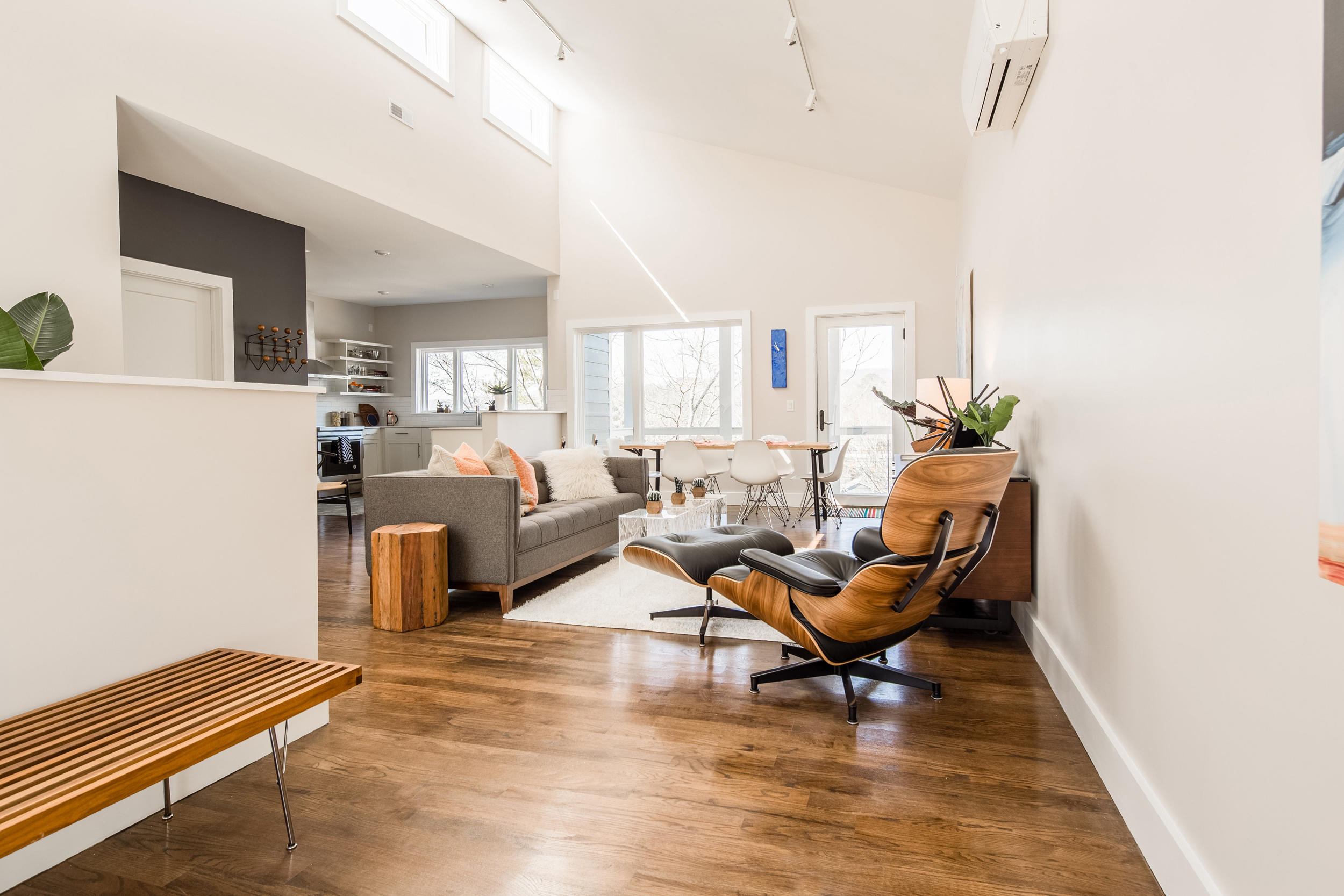The NexGen Homes were an initiative of green|spaces to demonstrate that NetZero high efficiency homes could be built and sold within the constraints of the existing housing market. The homes were designed and built speculatively to compete with other local houses but were designed to generate as much power as they consumed.
Workshop: Architecture provided technical consulting for green|spaces and prepared the construction drawings.
Siting and exposure. Of course we positioned the house to ensure year-round sun on the portion of the house that was going to get a solar array, but we also used the roof overhangs to provide summertime shade for the windows on the south side of the building. The east and west openings were protected by deep porches or operable shutters.
Insulation and air-sealing. The insulation in the walls, floors, and ceilings of a house are what hold the heat or cold inside or out depending on the time of year. Fiberglass batts, the convenient and common solution, are not the most energy-efficient to begin with, and poor installation can reduce their effectiveness even further. So instead, we are used a Greenguard Certified spray-applied open-cell foam for the ceilings and crawlspace. The foam has a much higher insulation factor than batts, serves also as an air barrier, and helps with air sealing at joints and crevices. Of course no amount of insulation will help if the wind can blow right in around windows, doors, or electrical outlets, which is why today we install some form of vapor-permeable air barrier. Like Gore-Tex for a house, the air barrier repels liquid water, allows water vapor to escape, and holds in the conditioned air. Air barriers take many forms—from building wraps to peel-and-stick sheets to rolled-on liquids— and the technology is always changing. The NextGen Home will use a self-adhered sheet with matching tapes to seal around windows and doors.
High-efficiency heat pump and energy recovery ventilator. Because when you seal everything up really tight, you actually do have to introduce fresh air through mechanical means. The benefit of doing this on purpose (rather than through a drafty window) is that the fresh air can be cooled or heated as it is introduced, and that reduces the load on the heating and cooling.
Solar array. The construction measures discussed above keep the house from using too much energy, but the other part of the equation is the 6 kW solar array, which will let the house generate enough renewable energy to meet its own needs.
Smart water use. Things like low-flow toilets and faucets reduce general water use. Pervious pavers on the patios and driveway let water through to the ground and keep it from running off into the streets and sewer system.
Client: green|spaces
Contractor: Antidote Architecture + Design | Build
Photography: Karen Culp





